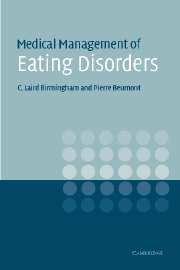Book contents
- Frontmatter
- Contents
- List of color plates
- List of contributors
- List of abbreviations
- Introduction
- PART I THE MEDICAL PERSPECTIVE
- PART II TREATMENT
- PART III SPECIAL ISSUES
- PART IV THE PSYCHIATRIC AND PSYCHOLOGICAL PERSPECTIVE
- 10 Physical disease and mental illness: pathology and psychopathology
- 11 Psychopathology and the mental status examination
- 12 Psychopathology and phenomenology
- 13 Specific psychological therapies
- PART V AREAS OF SPECIAL INTEREST
- Bibliography
- Index
- Plate section
13 - Specific psychological therapies
Published online by Cambridge University Press: 18 December 2009
- Frontmatter
- Contents
- List of color plates
- List of contributors
- List of abbreviations
- Introduction
- PART I THE MEDICAL PERSPECTIVE
- PART II TREATMENT
- PART III SPECIAL ISSUES
- PART IV THE PSYCHIATRIC AND PSYCHOLOGICAL PERSPECTIVE
- 10 Physical disease and mental illness: pathology and psychopathology
- 11 Psychopathology and the mental status examination
- 12 Psychopathology and phenomenology
- 13 Specific psychological therapies
- PART V AREAS OF SPECIAL INTEREST
- Bibliography
- Index
- Plate section
Summary
Anorexia nervosa
The few published controlled outcome studies in AN are plagued by problems, including small sample size, contamination of the independent variable through unequal numbers of therapists in each group, the control group having a different therapist to the treatment group, and the investigator also acting as therapist. In some studies, the intervention of interest has been delivered as part of a multimodal package, and it is unclear as to what extent outcome was related to the treatment ingredient. Despite these limitations, it is possible to identify common themes in the psychological approaches to AN and some therapeutic strategies that are potentially valuable.
Cognitive behavioral therapy in anorexia nervosa
In cognitive behavioral therapy (CBT), there is explicit emphasis on beliefs, assumptions, schematic processing, and meaning systems as mediating variables to account for maladaptive emotions and behaviors. CBT sees the central phenomenon of AN as the set of beliefs, attitudes, and assumptions about the meaning of body weight. Thinness is held as the principal construct on which self-worth is based. The anorexic eating behavior is also maintained by a series of negative (avoidance of developmental challenges of puberty, avoidance of performance expectations, avoidance of puberty) and positive (perceptions of control, positive comments from others, feelings of achievement and self-efficacy) reinforcers. The combination of positive and negative reinforcement that maintains the AN helps to explain the egosyntonic nature of the illness.
- Type
- Chapter
- Information
- Medical Management of Eating DisordersA Practical Handbook for Healthcare Professionals, pp. 220 - 234Publisher: Cambridge University PressPrint publication year: 2004



